Related Tags
The Industry Interview: Taylor Guitars CEO Kurt Listug on the past, present and future of the company
The story of how he managed to turn the products of a pair of Californian hippies into a brand that shook the acoustic guitar world.
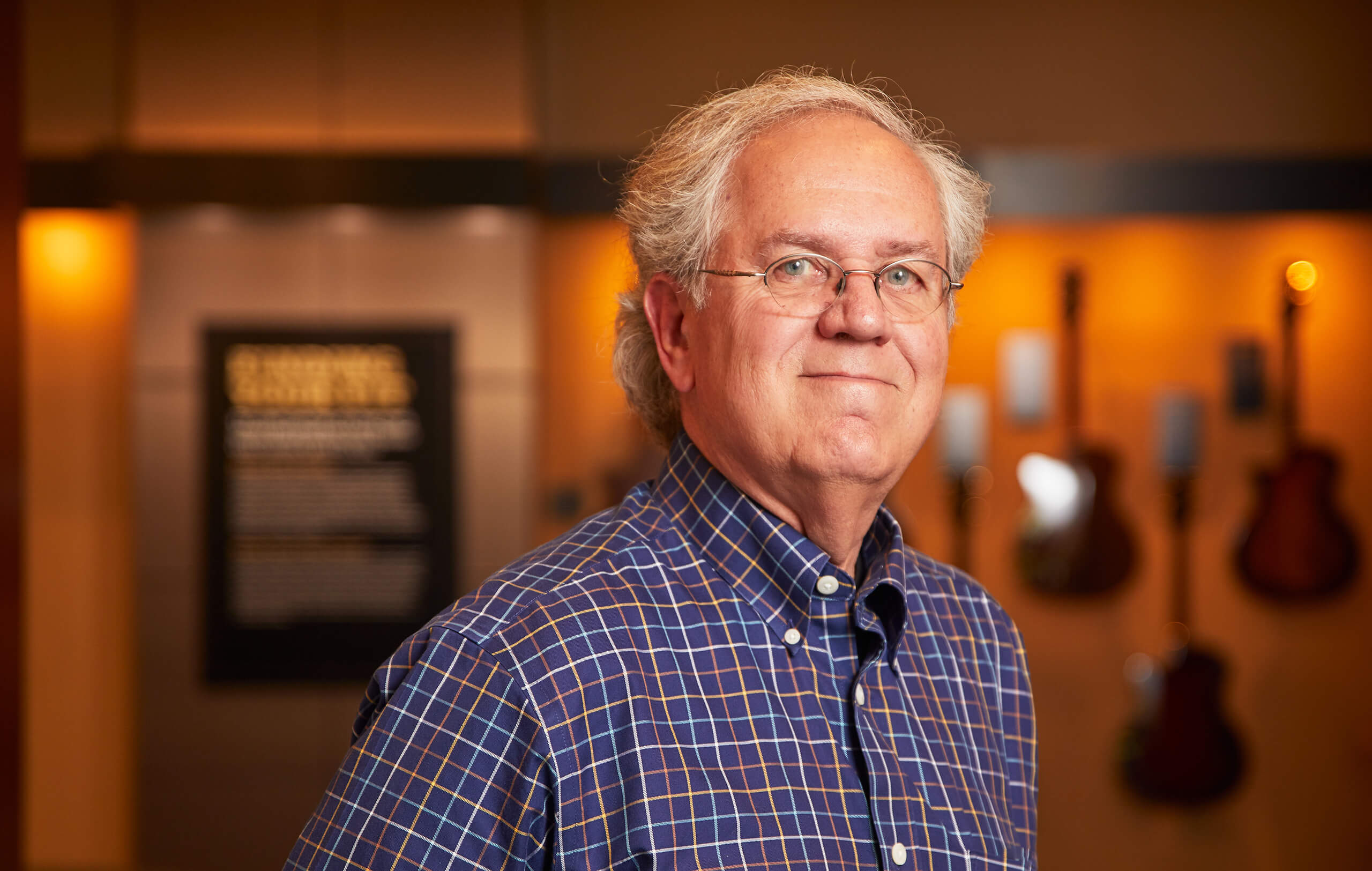
The instruments might not bear his name on the headstock but, as a business, Taylor Guitars is every bit as much Kurt Listug’s brainchild as it is Bob Taylor’s. It’s something Bob Taylor is quick to acknowledge when you speak with him – that the company they co-own, for all that it trades under Taylor’s name, was the product of two minds: Bob Taylor the guitar designer and Kurt Listug, who went out on the road and managed to turn the products of a pair of Californian hippies into a brand that shook the acoustic guitar tree so hard that even the venerable CF Martin, whose roots went deep down to the very birth of the steel-strung acoustic guitar in the USA, was severely jolted.
This was no small achievement. Since individuals began making their own acoustic guitars – a trend that didn’t really get under way until the 1960s – a surprising number have proved capable of building sometimes good instruments, sometimes exceptional ones. But most, if they stayed in business at all, remained so in a small way. A few have expanded into medium sized enterprises, inevitably at the boutique end of the market, but none has achieved anything like Taylor in terms of the volume of professional quality guitars it produces.
The initial appeal of Taylor’s guitars when they first appeared in the mid-1970s has been well documented. Unlike Martins of the time, they were easy to play, which appealed to electric guitarists who wanted to put down their light-and-low-strung Gibson or Fender electric mid-set and pick up an acoustic that didn’t feel like something they had to wrestle with. They were well built guitars, made of fine woods, with unique design features, and they produced a superb sound that quickly saw them appearing in the hands of top artists. It wasn’t Martin alone that felt the impact, because Taylor rapidly eclipsed Ovation – the brand that had become the acoustic guitar you took on stage because it could be relatively easily amplified and wasn’t too unlike your electric from a playing perspective. A Taylor could do all that and yet had a tone that could rival a Gibson, Martin or Guild.
“We did really creative campaigns, telling a story that wasn’t about the guitar itself, it was about people and how the guitar fitted in their lives and gave them joy”
None of which means it was an easy sell for the two young Californians – very far from it, Listug recalls. At times it looked like the company, which had adopted Bob Taylor’s name because they decided Listug on a headstock just wouldn’t look right, could barely pay their wages.
Explaining how Taylor guitars began, Listug says: “I started playing guitar in the 60s. I never got very good at it but good enough to play along with Beatles songs and I liked working on things, although I’m not a Bob Taylor by any means. While I was at college, a friend of mine from high school got a job at a little guitar shop called The American Dream, which was a co-op where you’d get a bench and do some repair work or get a commission to make an instrument, When it was done you get part of the price and the other part of it would go to Sam Radding, who owned the shop, to cover the rent and such. I also got a job there, learning how to do repair work.
“When I started, Greg Deering (later of Deering Banjo Company fame) was also there and was he showing me how to do finishing. At about the same time a young guy called Bob Taylor, who’d just gotten out of high school, dropped by and brought in a guitar he’d made, to show to Sam. Sam was impressed and offered Bob a bench there too – that was in the Summer of 1973.
“A year later, Sam decided that he wanted to sell The American Dream. He was a a real talented craftsman but a pretty happy-go-lucky guy and it was more responsibility than he wanted. He decided to go backpacking and left it up to us who were working there to work out who was going to buy it off him – very seventies-era, very hippy ish!”

Hippy shake-up
Hippies or not, it was then that Listug’s commercial instincts first began to emerge. Bob Taylor and another of the American Guitar Dream team decided they would form a partnership to buy the business, while Kurt and his friend, Steve Schemmer, had a similar idea. Unlike the other three, it was Kurt who visited the local small business administration (a support scheme for people starting new ventures) and put together a business plan. “It was more than Bob and Jerry had done as they were more focused on ‘we want to make guitars,’” he says.
“None of us had any money. I think Sam’s price was $3,700 and that included all the machinery, parts and so on. Bob had asked his family to help and I talked with my dad about lending me the money to buy it and he said, ‘Do you know how to make guitars?’ I said ‘Well, no, not really’ and he said ‘Well if you’re going into the guitar business you really need to know how to make guitars. Who is the best guitar maker there?’ I said that would be Bob Taylor and he said, ‘Well your mother and I would consider loaning you some money if you can get Bob Taylor to be your partner.’”
It must have called for a little fancy footwork, as Listug had to persuade Taylor to drop his proposed partner and team up with himself and Steve Schemmer, but the result was that the threesome formed an alliance to buy the business – though not before Listug had done something which, in retrospect, was to prove key to the venture’s success. He had learned from his research that the partnership needed a buy/sell agreement, which meant that if anyone wanted to pull out of the company at some later stage, those remaining had the right to buy the leaving partner’s share. In 1983, when Steve Schemmer wanted out, having disagreed with Taylor and Listug how to make a success of their enterprise, it was a relatively straightforward transaction that didn’t wreck the business.
“It was really a struggle the whole time, with heavy bills up to a couple of years past due and not being able to pay ourselves”
“Those first years, from October ’74, when we bought out Sam, to early ’83 when we bought out Steve, we struggled and struggled and weren’t able to grow very much. The American Dream was doing $30,000 a year when we bought it and eight or nine years later we’d only been able to grow that to around $130,000 a year, so it was really a struggle the whole time, with heavy bills up to a couple of years past due and not being able to pay ourselves.”
The learning curve was steep. Early Taylors were were built in batches because it seemed logical for them to do things that way. Which, as they later learned, was a mistake.
“We thought it would be most efficient to make batches of guitars of 10 guitars, which would take a month but actually we’d start a batch of 10 guitars, only six would make it and they would take two months, so it was one of these datums that it’s more efficient to make a batch because you spread your set-up time over whole batch but it’s not actually not true. Bob learned that a few years later from Augi LoPrinzi (the noted US hand builder of guitars and ukuleles). Bob met him at a NAMM show. He asked Bob ‘Would you rather have one one guitar completed, or ten half done guitars?’ So Augi taught Bob how he made guitars, which was one at a time. If it takes three weeks to do all the steps and you start one a day, you’ll have a guitar a day coming off the line three weeks later.”
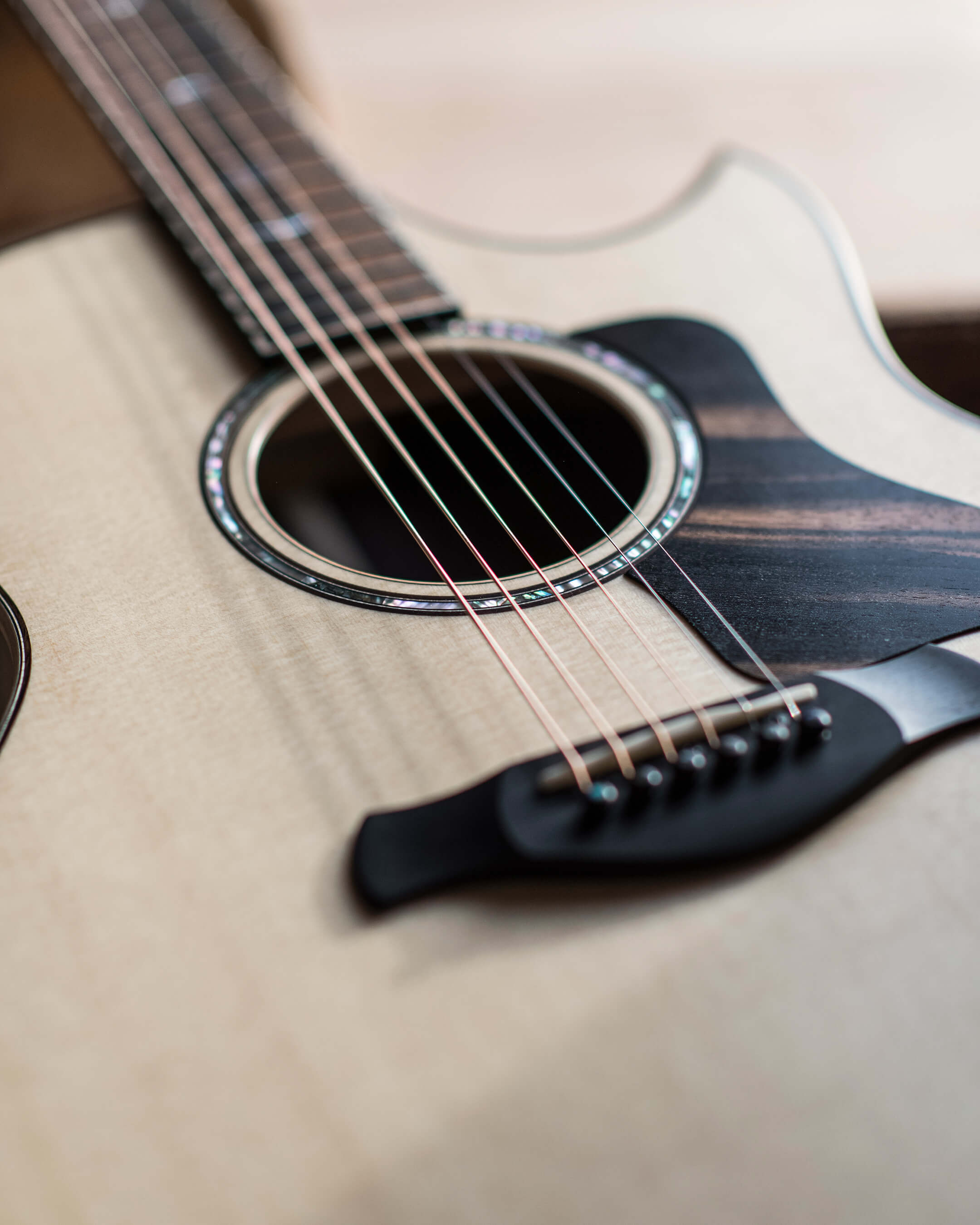
Retail therapy
At first, like most small guitar makers, sales were made to individual customers. “We’d make guitars and hang them on the wall and people would come in and buy them. But as soon as you start making more than just an occasional instrument you’ve got more guitars than you’ve got customers and then we realised we had to go the music stores. Then we realised, ‘Wait a minute! We’re going to get a lot less money selling them to a music store, so we’re going to have to make more guitars,’ and so we got into that whole vicious circle.
“Anyway, I loaded up a bunch of guitars and went to LA, having borrowed Bob’s van. I had got some leads from a friend who’d said should go and see Fred Walecki at Westwood Music and McCabe’s Guitar Shop and a few others. So I did just that and I came home with nothing but cheques!”
It was obvious from that moment that even if they were going to be earning a lot less for each guitar, this was going to be the way forward. But times were still grindingly hard. Bob Taylor was living with his sister because he was broke and neither of the partners was able to draw a wage. The problem they had now was that although they could get to shops in Los Angeles, how could they cover the rest of the country?
The key to the ready acceptance of those early Taylors had been spotted by the same friend who had suggested which stores Listug should visit. He’d also said: “Your guitars are nice. The problem with Martins is that they have such a baseball neck and they’re hard to play.”
Notwithstanding the other attractive Taylor qualities – the innovative bolt-on neck, the vibrant tone and high build quality – it was the playability that attracted early adoptees. Listug is on record as having described the difference between their guitars and Martins and others as somehow epitomising the difference between the East and West coasts of the USA.
“I was talking with Andy Powers about this recently. West Coast is more casual – it’s more comfortable. If you were to compare electric guitars, how comfortable is the Les Paul compared to Stratocaster? There’s a big difference there. A Stratocaster is designed for comfort and people in the West Coast dress more for comfort so it’s just a different attitude.”
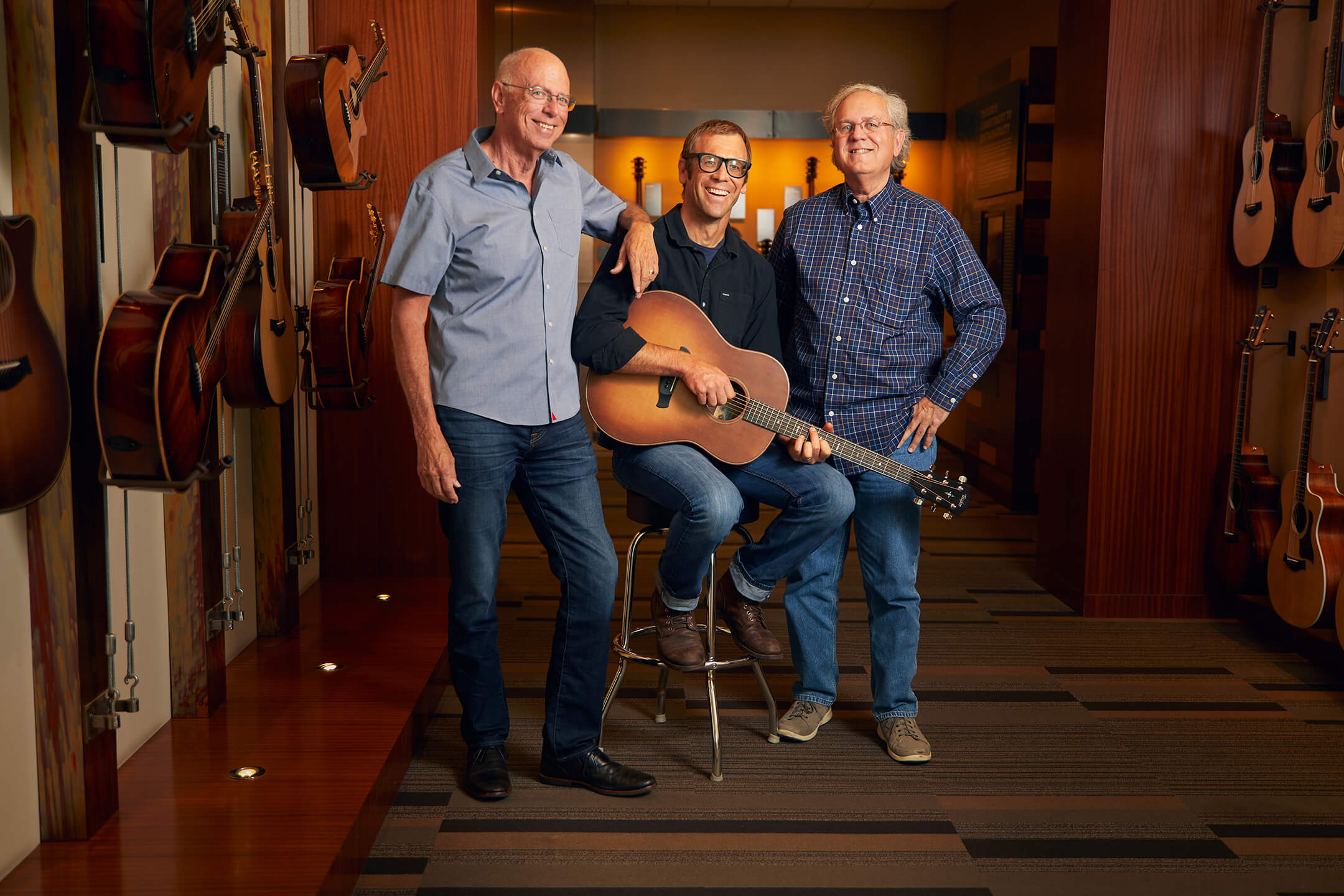
Going electric
Another feature that appealed was the relative ease with which a Taylor could be amplified. “When we started, going back to ’73, I don’t remember any crossover between acoustic and electric guitarists. Electric guitarists back then just wouldn’t play acoustic guitars and vice versa. Ovation changed that, Ovation designed a guitar that worked as an acoustic guitar and the pickup was the whole thing. It was for us, too. We started putting pickups in guitars – early Barcus Berrys and Hot Dots and pickups from Lloyd Baggs. We used them for the longest time and we worked with Larry Fishman for a long time too, then we developed our own.
“Without our guitars having pickups we wouldn’t be anywhere near as popular as we are. In a sense we took over from Ovation but we made a legitimate acoustic guitar out of wood, it was easy to play, it had a great pickup that worked, it was more comfortable, it had a little bit more contemporary styling and that all came together to make us successful.”
They still needed more stores to sell their growing production into, however, so the next step was finding a distributor.
“You had Saturday Night Fever, disco dancing and synthesisers and you wouldn’t even hear a guitar in music for a period there”
“Our biggest challenge was getting out and finding more stores as we didn’t have the time or the money to travel. We were really stuck in Southern California but as soon as we started making more guitars, Paul Rothchild [record producer for The Doors and others] and his brother came down to see us. They had this idea of becoming a distributor for small guitar makers like Alembic, Larrivée and people like that. They had a warehouse if San Francisco and they’d hired sales people.
“They presented the argument that your guitars are underpriced and we think we can buy guitars from you at pretty much the same price as you’re getting from dealers. Of course, that didn’t work but the benefit from that period was they had sales people around the country finding music stores to sell Taylor guitars and so a distribution network around the US got built. We’d get registration cards from around the country, telling us which stores were selling them, so when the time came that we realised we were just digging ourselves into a hole not making any money and we decided we had to go out on our own, we had a start.”
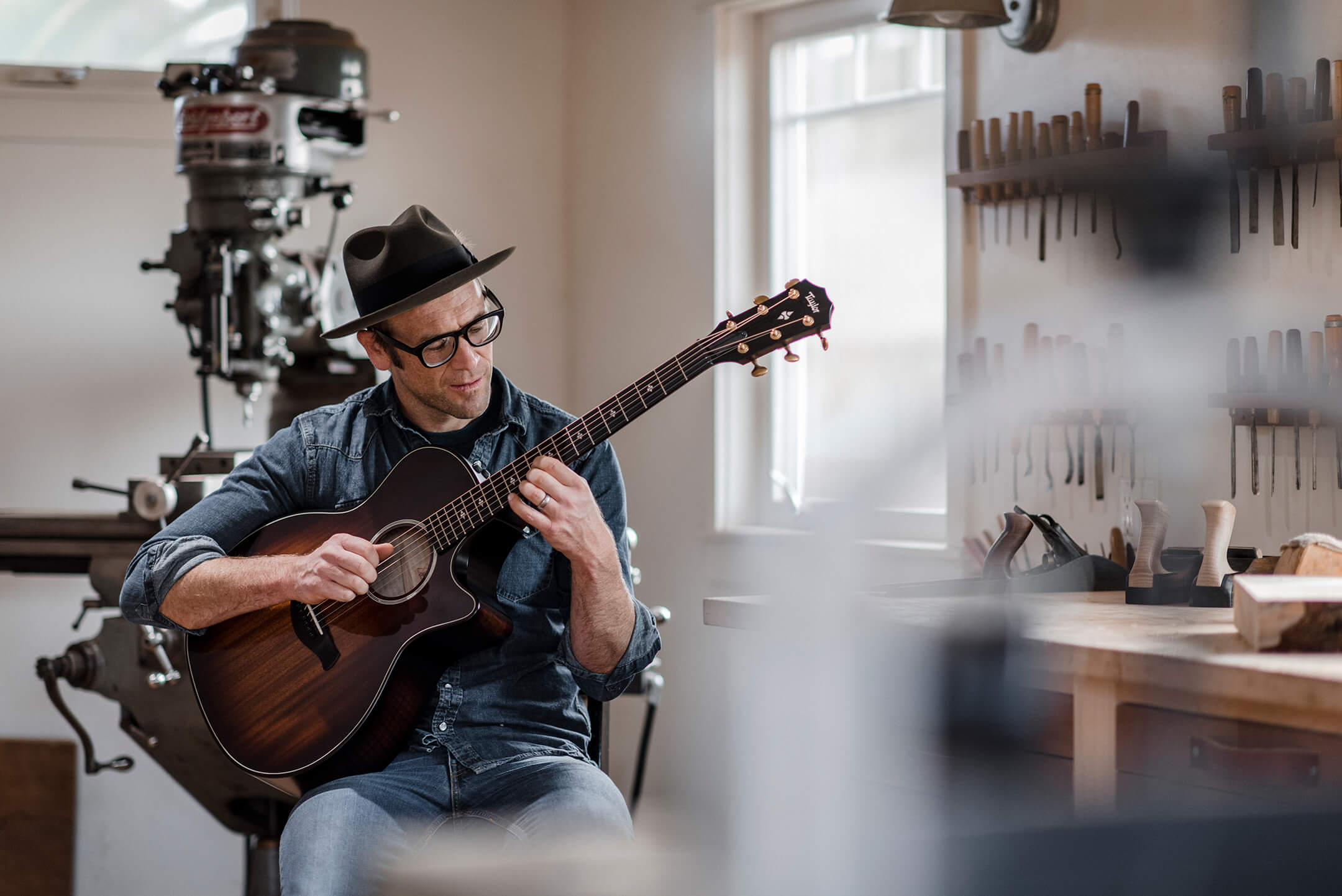
Hard times
But even tougher times were ahead – not just for Taylor but for the entire guitar industry. Hard though it might be to believe today, the early 1980s saw magazine articles seriously asking the question whether the guitar as a phenomenon in popular music was finally dead. The rise of disco music and tsunami of keyboard-dominated bands propelled by the launch of Yamaha‘s DX7 in 1983, saw guitar bands pushed out of the limelight. If today’s hip-hop dominated scene looks difficult, it was many times harder in the 1980s and no guitar maker escaped unscathed.
“You had Saturday Night Fever, disco dancing and synthesisers and you wouldn’t even hear a guitar in music for a period there,” Listug recalls. “That was the low for all the guitar companies around ’82 and we tried different things, like we made the purple 12-string for Prince – we’d try anything to change the image of the acoustic guitar. Then by the mid-late 80s you’d start hearing acoustic guitar on soundtracks again and on the radio. Then there was a show in America called The Wonder Years, which had Snuffy Walden playing our guitars, and a few years later Eric Clapton did Unplugged and the guitar market started picking up again.
“In the late 80s we finally hit the point where we were making four guitars a day and two days a week we’d make five a day – that’s how small we still were at the time! We thought if we could make a fifth guitar two days a week that would make the difference between being able to pay ourselves that week or not. It took us from 1974 until ’86 or ’87 with the 22 guitars a week, that we had enough sales that they’d all be sold and, having our bills all paid, we could finally pay ourselves every week.”
The business was now starting to grow. In 1988 Taylor generated one million dollars in sales for the first time and by 2002 that had grown that figure to an impressive $50 million. How? Well, leaving aside developments in the instruments themselves (that’s a story for another day) the answer was marketing – blisteringly good marketing: a form of sorcery that had begun to fascinate Listug.
“I think there’s a good chance that down the road Andy will be at the helm of the whole company”
“I always thought a brand was a curious thing. It’s like, I’m a Porsche guy. I’ve had a lot of Porsches there are a lot of people out there that would love a Porsche though they’ve never driven one, never even sat in one, but they know they want one. How does that work? How does that happen? Having grown up with The Beatles – I was in sixth grade when I Want To Hold Your Hand came out in America and they were on with Ed Sullivan in that February of ’64. Look how that changed the world, the way that explosion changed the social trends and the music trends – man, how does that happen? Around 2000 I knew that I had to make the brand bigger and more popular for us to grow and that I had to find people that understood how to help me do it.
“Bob and I had both bought Harley-Davidsons by then and I had seen one ad that really stood out for me. It was Harley-Davidson ad and it didn’t have motorcycle in it. It had a picture of a sky with a constellation and it said ‘Have you ever looked up and seen a ’57 Panhead?’ And I thought that’s incredible because it’s really speaking not to the product itself but what the product means to you and the pride of ownership, dreaming about the product and role it plays in your life. If you relate that to guitars it’s not about the carefully multi-laminated binding, it’s not about features at all – it’s almost not even about the product – it’s about what does the product do for you in your life? That ad really made an impression on me.”
Brand awareness
As it happened, that Harley advert was one of the examples brought to them by a local advertising agency that was pitching for Taylor’s business. As soon as Kurt saw it he knew he’d found a like-minded team. The next few years were to see guitar advertising like it hadn’t been done before. Purists might scoff, but hardly any guitarist could claim never to have been influenced by the magic that surrounds certain instruments and brands – and what Listug set out to do was apply it to his and Bob Taylor’s brand as relative newcomers that couldn’t, for example, claim to have been on the covered wagons that rolled across the plains, or have been on stage with Buddy Holly. The trick was to do it with sincerity.
“The first ad campaign we did used stock photography and we basically talked about our love of trees and how trees go into the making of an instrument. It’s a living, breathing thing that you make music on. We ran two-page ads in the major American magazines and from there we ran multiple campaigns that were all different ways of telling the same story. And then the stories came back from people who’d bought our guitars – letters they sent, comments they’d made, like about how they’d discovered Taylor and their wife had encouraged them to buy one. We ran multiple campaigns about loving making music on your Taylor. We did really creative campaigns, telling a story that wasn’t about the guitar itself, it was about people and how the guitar fitted in their lives and gave them joy. A lot of the adverts didn’t even have guitars in them. Those ads were really popular and helped us make the brand.”
What the company didn’t do, however, was tread the well-ploughed furrow of artist endorsements. Plenty of famous guitarists play Taylors and speak of them reverentially, but Listug is sceptical whether artist endorsements sell acoustic guitars. Instead, the company has developed communication with its family of Taylor owners through its own magazine, Wood & Steel. Having said he doubts the effect of endorsements, however, he admits he and the rest of the Taylor team were recently thrilled by an issue of GQ which featured Paul McCartney extensively using and enthusing over his own Taylor. The irony is that they didn’t even know McCartney owned a Taylor (he had been given one by Richie Sambora, apparently) so if that counts as an endorsement it was an entirely uncontrived one.
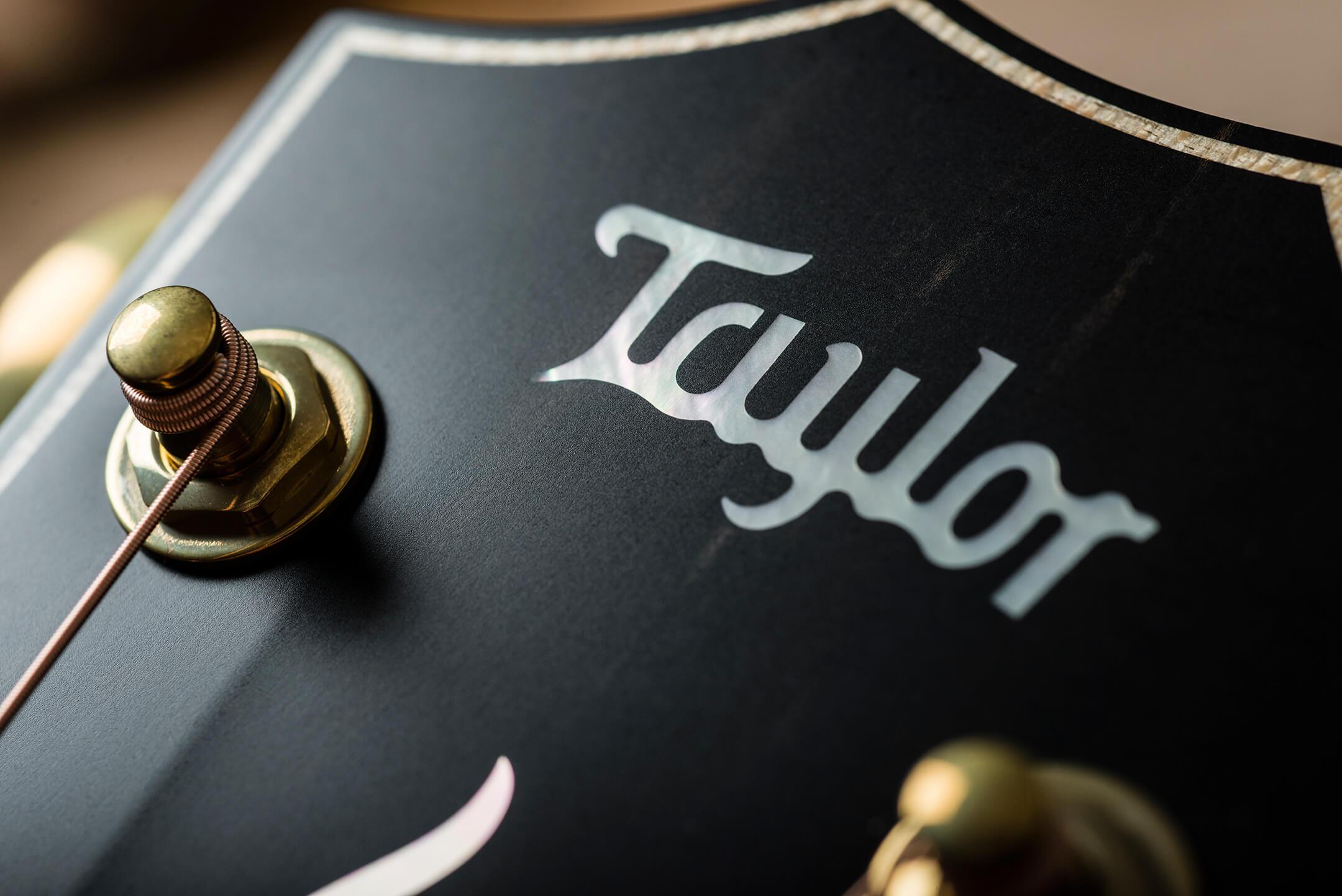
Inevitably, the generation that saw Bob Taylor and Kurt Listug found and grow a great business is now getting to an age where thoughts about retirement and succession loom. Bob Taylor has been perhaps most famous in the industry for being open about this, nominating Taylor’s master guitar designer and now ownership partner Andy Powers as his successor. How about Kurt Listug – has he earmarked someone to take over his role as the business guru of the team?
“Not really,” says Kurt. “The business grew because Bob and I had different interests. We started together and divided them up so each did our own thing that contributed to the company. But he needs a talented individual voice for instrument design. It can’t be done by a sales and marketing committee deciding on set price-points and features. But for me, I’ve built a team of talented people who are all better at their parts than I was – finance, sales, marketing. And these people are all total pros at what they do. I guide and I mentor them but I think the business will be different in the future. I think we’ll have solid teams in these different departments and Andy is smart and capable enough. I’m teaching him finance now and he’s very involved in marketing, so I think there’s a good chance that down the road Andy will be at the helm of the whole company.”
Don’t take that as a hint that Taylor is about to let up the pressure. Listug reveals a five-year plan (sadly, he doesn’t go into detail) which includes developing inroads into the electric guitar market, new materials, new instruments and no let-up in Taylor’s quest for innovation. There’s not even a hint that he won’t be there personally to oversee it, either.
For more features, click here.
